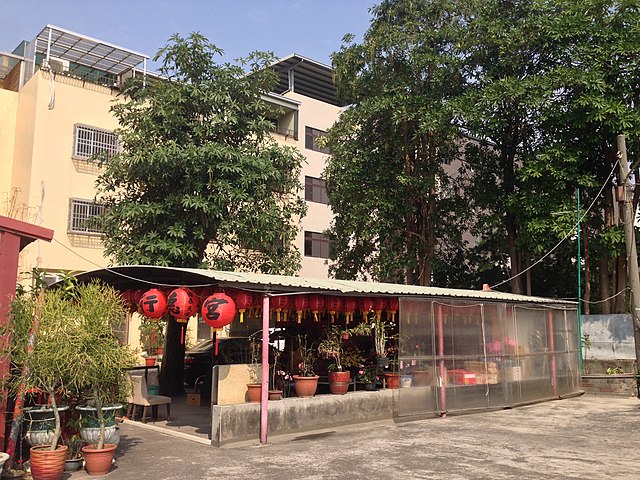In Taiwanese folk religion, yin miao are temples dedicated to wandering and homeless spirits, as opposed to yang miao, which are dedicated to deities. According to local beliefs, ghosts without a permanent resting place wandering in the human realm and may cause trouble for the living. Therefore, yin miao serve as such resting places for these spirits as a form of respect and to maintain peace. Temples dedicated to deities associated with afterlife, like Cheng Huang Ye or Di Zang Wang, are not considered yin miao.
Xingde Temple in Taiping District, Taichung, dedicated to an unnamed Filipino migrant worker that drowned.
A plaque inscribed with the names of those who died building Suhua Highway, located on the altar of Kailu Xianfengye Temple in Su'ao, Yilan County.
In a broad sense, Goryō is an honorific for a spirit, especially one that causes hauntings, and the term is used as a synonym for onryō . In a narrower sense, it refers to a person who was a noble or accomplished person in his or her lifetime, but who lost a political power struggle or died prematurely from an epidemic or other disease, becoming a onyō that brings pestilence or famine and is later enshrined as a kami in Shinto shrines. For example, the "Sandai Jitsuroku" mentions that six Shinto shrines were dedicated to the worship of goryō, which were the spirits of those who died from non-natural causes. Later on, two more shrines were added, bringing the total to eight.

Ukiyo-e by Tsukioka Yoshitoshi depicting Sugawara no Michizane as the Tenjin (kami of thunder.). After Sugawara no Michizane's death, lightning struck the palace, killing and injuring many of the powerful people involved in his banishment, and Sugawara no Michizane was enshrined in the Tenmangū (Shinto shrines) as the Tenjin.



